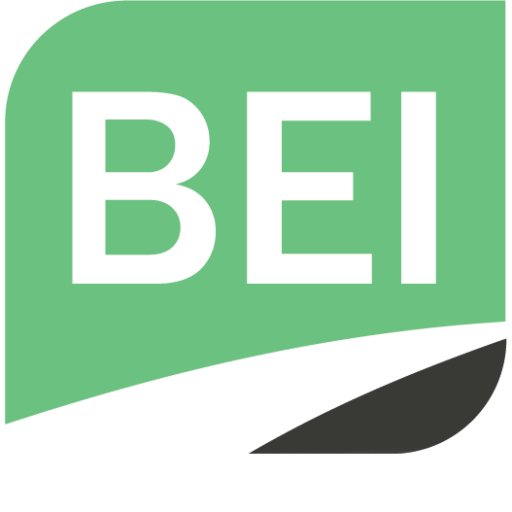Defining Your Differentiator as an Exit Planning Advisor
mernzen
Fri, 10/28/2022 – 08:00
One of the most common questions asked by advisors looking to expand their work and engage clients is how to differentiate themselves. It’s no question that the marketplace is oversaturated with messages that may be absorbing your marketing efforts.
As discussed in a recent BEI blog about marketing goals, there is no one-size-fits-all approach that will magically dub you as your client’s most trusted advisor. However, at the core of mapping out the marketing messaging for your Exit Planning practice is determining what your “differentiator” is.
Simply put, your differentiator is the unique value that you provide to your clients. Offering Exit Planning services in itself can be a unique value-add, but there are additional ways to position your value to stand out among your peers and to your clients and prospects.
Defining Differentiation
According to a recent article by Hinge Marketing, a differentiator is defined as “a characteristic of your firm that separates you from key competitors and gives you a perceived advantage in the eyes of your target audience.”
Oftentimes advisors or professional firms work really hard to come up with their “wow” factor, only to find out that it isn’t hitting the mark. Hinge Marketing suggests that there are three important criteria that should be used to evaluate a differentiator:
It must be true.
Are the claims you are making about your firm and your services realistic? What policies, training, or procedures are in place that ensure the deliverability of your differentiator?
It must be relevant.
The solution that you provide to clients and prospects should be directly related to the selection criteria they value most when looking for advice. They won’t choose to work with you if they don’t see what role you play in their decision-making process.
It must be provable.
What tangible proof can you provide that will legitimize your claims? Prospects want hard evidence.
All three criteria above look at differentiation beyond great products and stellar service. Here’s what Michael Kitces, perhaps the most well-known consultant to financial advisors, says about the great service argument:
“It’s incredibly difficult to use “great service” as a differentiator. In fact, according to one recent study, 72% of all advisors differentiate on client service. And by definition, when the majority of advisors differentiate on the same point, it’s not differentiating anymore!”
Sharing Meaningful Differences
As far as Exit Planning goes, we look at differentiation in two ways. First, there are a variety of ways that you, the advisor, can use yourself and your practice as a means to differentiate. Secondly, which will be discussed in a blog post forthcoming, is an assortment of ways to use your client and their consumer identity as a means to differentiate.
The list below highlights a few meaningful differences between you and your competitors in terms of your offerings as an Exit Planning Advisor.
- Industry Specialization
Clients value advisors that know about their industry. Targeting a handful of specialty areas will help you develop credibility in the spaces that you work with. Be wary of focusing on too many industries as it could decrease credibility. On the other side of the coin, narrowing in on only one industry might backfire with changing economic conditions, so it is best to diversify, earning credibility in multiple areas.
Clients also seek relatability. Similar to industry specialization, a role-based proficiency can serve as a powerful differentiator for your practice. Who you have experience working with and what they do in their respective companies can oftentimes be important to prospects.
- Unique Connections
As an Exit Planning Advisor, you will work with a variety of professional service providers during the course of each Exit Planning engagement. This network that you’ve built can benefit your client and can be used as a differentiator too.
For example, if you have a business consultant that has worked alongside you on Advisor Teams, you can present this contact as a resource to clients who may also be seeking consulting services.
In addition, your ties to the community or other organizations (charitable or professional) may be suitable as a differentiator as well. For example, maybe your firm has deep roots in a geographical location that could draw in prospects, or, perhaps your working relationship with other firms might separate you from your competition.
- Unique Offerings
Working with business owners who haven’t yet done much planning for their business exit often have a hard time seeing the bigger picture. As an Exit Planning Advisor, it can be a major competitive advantage for you to use your planning process to stand out.
Exit Planning Advisors who are BEI Members have reported success in creating, modifying, and executing Exit Plans using the BEI PlanIt software. This is because this software allows advisors to produce valuable deliverables and unique planning recommendations that are customized to their client.
In addition to being able to provide an Exit Planning Process, you can also provide a unique set of information not available to clients or prospects elsewhere. For example, as a BEI Member, you could make introductions to different advisors in the network, exclusive marketing materials, and more.
- Notable Accomplishments
In Exit Planning, expertise is what you sell. Your clients are buying your services because you are solving a problem. In addition, a strong reputation is one of the only factors that can overcome a relationship-building challenge.
As mentioned above, Exit Planning Advisors have unique offerings to provide clients. It would be doing yourself a disservice to downplay the training and education that you’ve put in to be able to provide Exit Planning.
- Staff Credentials
It can oftentimes be hard to make the quality of your team a differentiator, but suppose your firm only hires people with exceptional qualifications or training. This could certainly be used as a differentiating factor.
As far as credentials go, we have also heard of success that comes from a dedication to continued education or designations. For example, it could be framed as a unique Exit Planning value proposition to have multiple members of your staff complete the Advanced Exit Planning Series or go through the Certified Exit Planning Advisor (CExP) designation process.
- Business Model
It is common for businesses to attempt to compete on price alone. As an Exit Planning Advisor, you have the capability in defining your own business model by coming up with a fee structure or deposit structure that is different from that of your competitor.
Advantages of Differentiation:
All of the above ideas are just a few that you might be able to use to your advantage, particularly if they meet the differentiation criteria. By choosing a special characteristic regarding your experience, expertise, or offerings, your differentiator has the ability to:
- Convince prospects to work with you
- Entice a greater appeal to a larger target audience (more leads!)
- Increase loyalty from current clients
- Attract referrals
- Establish thought leadership
- Justify higher fees for Exit Planning
The Bottom Line
It is not always easy to determine a differentiator, and there is no rule that your practice has to have only one. The key is to choose an approach to differentiation that works for your team, research to identify perceptions, and validate them with the marketplace.
When you dedicate time to craft meaningful messages about your differentiators and vow to live them out in your work, that is what really separates you from key competitors and gives you an advantage.





